Don’t know where θ goes? Clear it up with a drawing trick! (A story connecting nursing and high school physics on “Force Decomposition”)
Even Nursing Students Struggle?! Let’s Make Physics Fun with Remedial Education!
Have you ever heard of remedial education? Simply put, it’s about “supplementing the foundational academic skills needed for university studies.” A lot of students in nursing programs, in particular, struggle with physics, so I even wrote a textbook for them called “Maruwakari Kiso Butsuri” (Nanzando Publishing).
But why would nurses need physics? You might be surprised, but physics knowledge is actually incredibly useful in the healthcare field. For example, things like body mechanics when assisting a patient, or adjusting the pressure on an IV drip—physics is used in surprisingly common situations.
I often get questions from current and former nursing students that are also common in high school physics. So, this might be helpful for all of you, too!
“Why does sinθ go with the component of gravity along an inclined plane?”
This is a very common question when dealing with “force decomposition” in physics. Especially when you’re figuring out the forces on an object on an incline, it’s easy to get confused and mix up sin and cos. I’ve had students bring me mock exam problems to ask this exact question. Imagine a situation like this:

An object moving on an inclined plane
When you decompose the force of gravity acting on an object on an inclined plane, the components are split into a direction parallel to the slope and a direction perpendicular to it. Do you know why the component along the slope has sinθ? It’s true that when you decompose gravity, it’s not immediately obvious from the diagram where θ goes.

Where does θ go?
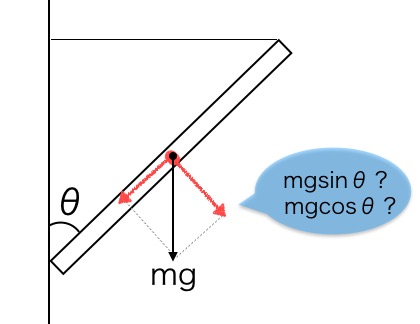
Sine or cosine?
First, let’s redraw the diagram with an extreme angle!
The usual way to solve this is by using the properties of similar triangles, but I recommend a different approach: redraw the given diagram with an extreme angle. For instance, let’s make the angle of the inclined plane extremely small.
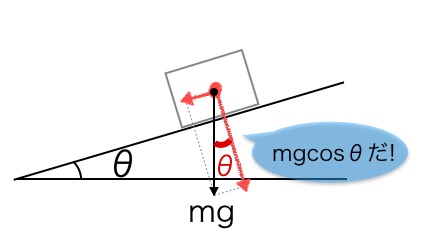
When you do this, you can guess that the small, pointed angle in the decomposed gravity triangle is θ. You can also try redrawing the diagram with an extremely large angle. For example, let’s redraw the moment of force problem from before with a larger θ.
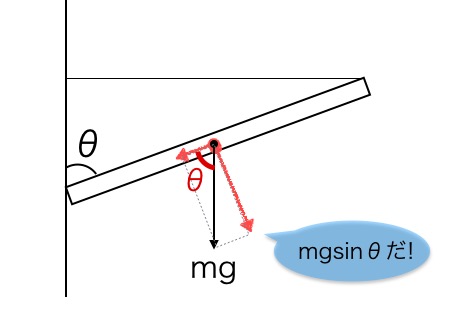
With this, the position of θ is obvious, right? So, when the problem gives you an ambiguous diagram with an angle like 45 degrees, redraw it with an extreme angle (like 30 or 60 degrees). You’ll be able to figure out the position of θ by sight, which is easier than using the properties of similar triangles.
The reason is similar triangles and alternate interior angles
Of course, you still need to understand the logic behind why θ goes there. In the case of an inclined plane, you can find the position of θ by focusing on the two similar right-angled triangles.
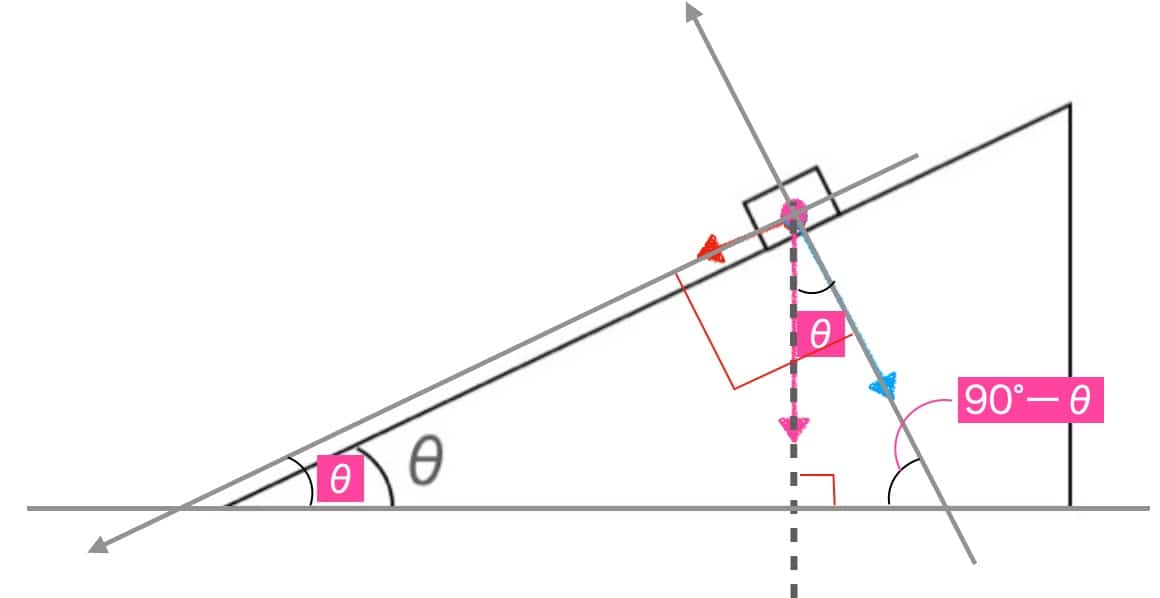
This shows you how to express the magnitudes.
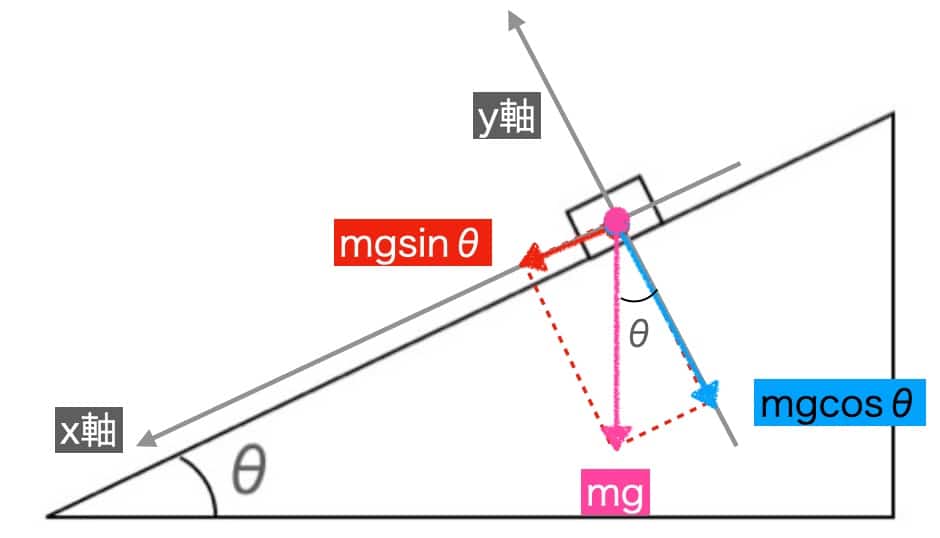
You can also use the properties of similar triangles or the knowledge of parallel lines and alternate interior angles. I’ve put together an explanatory video on this, so be sure to check it out.

|
What is a force? This lesson covers the properties and types of forces. ・Experiment on the Composition of Two Forces (Parallelogram Law) |

|
Inquiries & Requests
Let’s make science’s wonders and fun more accessible! We’ve put together easy-to-understand explanations of cool science experiments you can do at home, along with tips. Feel free to search for more!
・About the manager, Ken Kuwako: Click here
・For various requests (writing, lectures, workshops, TV supervision, appearances, etc.): Click here
・Updates are also available on X!
![]() Our Science Neta Channel features experiment videos!
Our Science Neta Channel features experiment videos!




